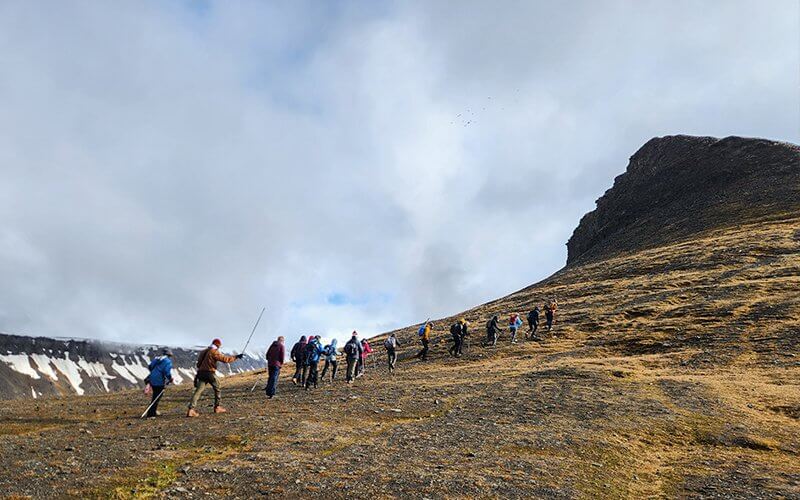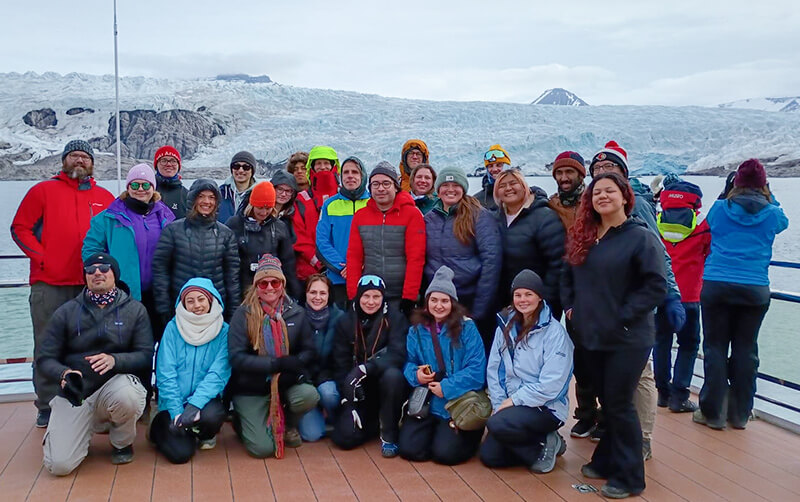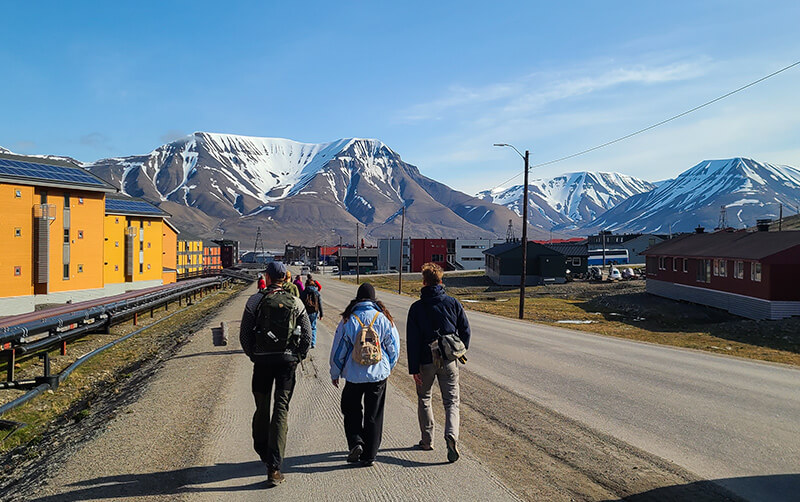
For 19 Cal State Fullerton students, this summer’s study abroad trip to Sweden and Norway was filled with new experiences — seeing caribou, a glacier calving and the midnight sun — but what will stick with them is the fragile, shifting nature of the Arctic environment and how a place that seems remote actually has myriad connections to the rest of the world.
Trevis Matheus, chair and associate professor of geography and the environment, and Mark Drayse, professor of geography and the environment, took the group to Stockholm, Sweden and Svalbard, an Arctic archipelago north of Norway and east of Greenland.
Students learned about factors affecting human interactions with the Earth and natural systems, including environmental ethics, technology and political policies, and they also met and learned alongside a group of students from a Swedish university.
Classes and lectures touched on the Arctic’s shifting climate, Matheus said, but “being able to see these geologic processes in real time, happening right before your eyes, is something that you really can’t get anywhere else.”

Matheus explained to students how Svalbard was formed and how glaciers shaped the vast, barren landscape. To see that landscape, Cameron Edwards, a graduate student majoring in geography, took a challenging hike up a snow-capped mountain, atop which he had his first snowball fight.
While no polar bears made appearances during the trip, geography and religious studies major Sasha Albano spotted Arctic foxes, Arctic terns and a wealth of colorful wildflowers. But one of her favorite parts of the trip was getting to know the Swedish students and learning a bit of their language.
“I consider myself a cultural geographer, and just experiencing the world and new places is a big part of understanding different cultures,” she said.
While visiting Longyearbyen in Svalbard, one of the world’s northernmost settlements, students saw the changing climate manifested by buildings shifting as permafrost melts and snow fences erected to protect the town from an increasing number of avalanches.
“One of the things we wanted the students to appreciate is how fast-changing the Arctic is,” Drayse said.

Hearing a lecture about Indigenous cultures inspired Edwards to study the region further. “We see the Arctic as this completely uninhabitable zone, but people have been living there for thousands of years. I want to know more — how did they do that?”
Students also learned about the community’s economic shift away from coal mining and toward tourism, illustrated by the arrival of a cruise ship with 3,500 aboard — which more than doubled the town’s population when they disembarked.
Drayse’s teaching stressed the many connections between seemingly remote Svalbard and the rest of the world, such as regular stops by ships and planes and ground stations that download data from satellites in orbit.
For Edwards, the study abroad experience opened up his view of the world, from hiking up the mountain and seeing glaciers to meeting residents in Svalbard and getting to know his Swedish peers.
“I don’t think a classroom can teach what I was taught just by walking through nature, walking through these towns, being invited to be a part of another culture,” he said.